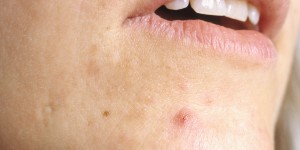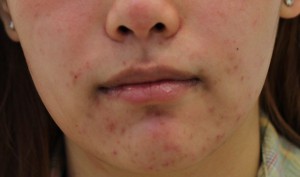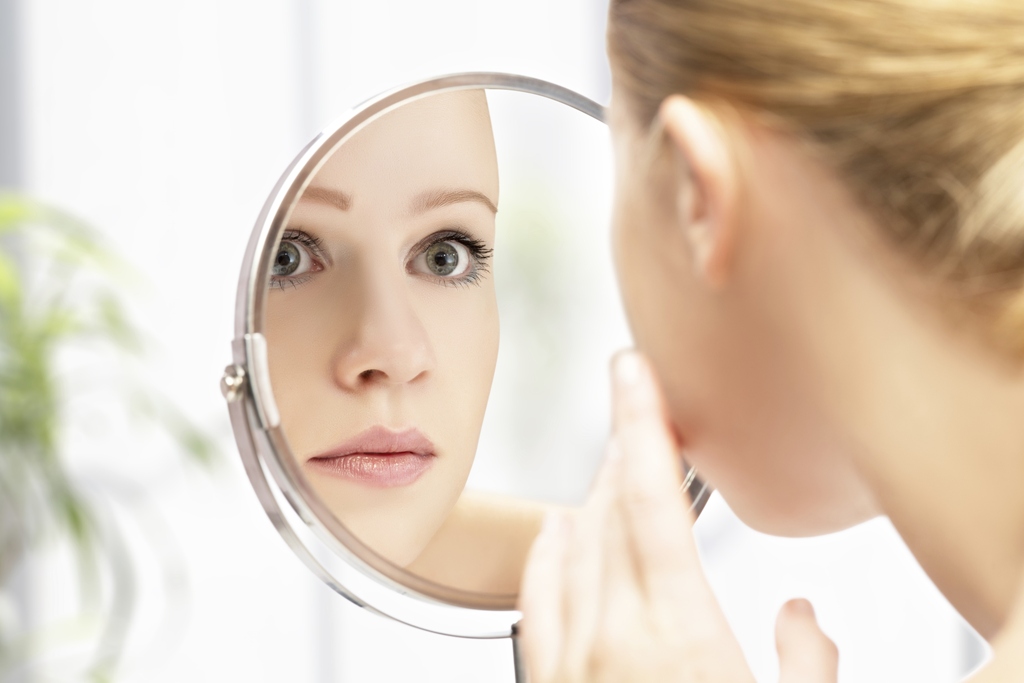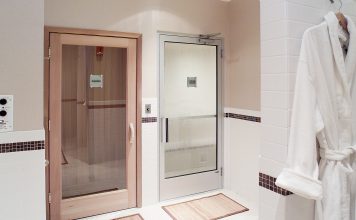 Your acne is your body expressing itself. It’s one way the body communicates internal
Your acne is your body expressing itself. It’s one way the body communicates internal
So instead of reacting to a skin issue with a harsh exfoliator or “miracle” cream, we must respond from a place of curiosity, openness, space and control. Take a moment every day to look at your face with curiosity and kindness — every blemish is a gentle note your body has left you.
So what’s your skin telling you? Here are three common acne patterns, how to “translate” them and how to “respond.”
1. Congested forehead
 Pattern: Many rash-like, tiny bumps all over, with or without white/blackheads. Maybe barely noticeable, more felt than seen. May extend to temples.
Pattern: Many rash-like, tiny bumps all over, with or without white/blackheads. Maybe barely noticeable, more felt than seen. May extend to temples.
Message: Acne on the forehead often indicates too much stress or increased stress. The forehead is the Vata portion of the face, and anxiety or stress are typical Vata imbalances. This type of acne can also indicate dehydration and/or constipation (the colon and intestines are also governed by Vata).
Response: Your body is telling you to drink more water to flush toxins and helps with elimination (ideally, you want to be pooing twice a day … anything less is technically considered a form of constipation). If you’re not going at least once a day, toxins are building up in your system and might be the cause of your acne.
Dealing with stress is hard, but incredibly important because if you’re stressed, your entire hormonal balance gets thrown off, digestive issues increase and you open the floodgates to every health challenge that aggravates
2. Cystic acne
 Pattern: Usually around jawline or chin/lower cheek area. Pimples are usually large, sit deep under the skin, can take weeks to heal and are sometimes painful to touch.
Pattern: Usually around jawline or chin/lower cheek area. Pimples are usually large, sit deep under the skin, can take weeks to heal and are sometimes painful to touch.
Message: This type of acne indicates hormonal imbalance, which can be caused by any type of hormonal imbalance (estrogen or androgen dominance, PCOS, adrenal fatigue, insulin resistance, etc.). The lower third of the face is the Kapha region, and the fluid-retaining, swollen characteristics of these pimples reflect the qualities of Kapha.
If the acne is under the jaw and ears toward the back of the neck, that’s where some of the largest cranial lymph nodes are located. You can be pretty sure breaking out here indicates some lymphatic stagnancy and congestion related to poor liver detoxification.
Response: With hormonal acne, an adjustment in diet and lifestyle is needed (do your best to eliminate sugar, white carbs, unhealthy fats, caffeine, alcohol and processed foods). You can take your time adjusting diet and lifestyle so it’s a pleasurable experience and you can create a sustainable lifestyle for you.
Sleep and exercise are also important. If you’re not getting enough sleep, you don’t give your body enough time to detoxify properly, in addition to messing with your hormones. Exercise is crucial because cystic acne is almost always also related to lymph stagnancy and if you’re not moving, the toxins aren’t either.
3. Acne around the mouth/nose
 Pattern: Red, inflamed acne and puss-filled whiteheads around the mouth and nose
Pattern: Red, inflamed acne and puss-filled whiteheads around the mouth and nose
Message: In Ayurvedic face mapping, this area corresponds to the stomach and digestion. Acne like this can indicate digestive inflammation, stomach hypoactivity or food sensitivities.
Response: It can be pretty easy to identify food sensitivities if you take a test. Then there is no guesswork involved. Alternatively, you can try an elimination diet. If you suspect your stomach acid is low and your food isn’t digesting properly, then try taking digestive enzymes or take a teaspoon (in a shotglass of water) of apple cider vinegar before meals.
Other things to try are taking a good quality probiotic and getting lots of supergreens. If you’re not up for eating a pound of veggies a day (which is ideal because it crowds all the worse food off your plate) then try spirulina, chlorella or a supergreens supplement.
If all of this sounds like a lot of overwhelming info, that’s normal. You can’t be fluent in the language of acne after just one lesson! Stay curious about your skin, keep trying to heal it and simply do your best.
Source: mindbodygreen









